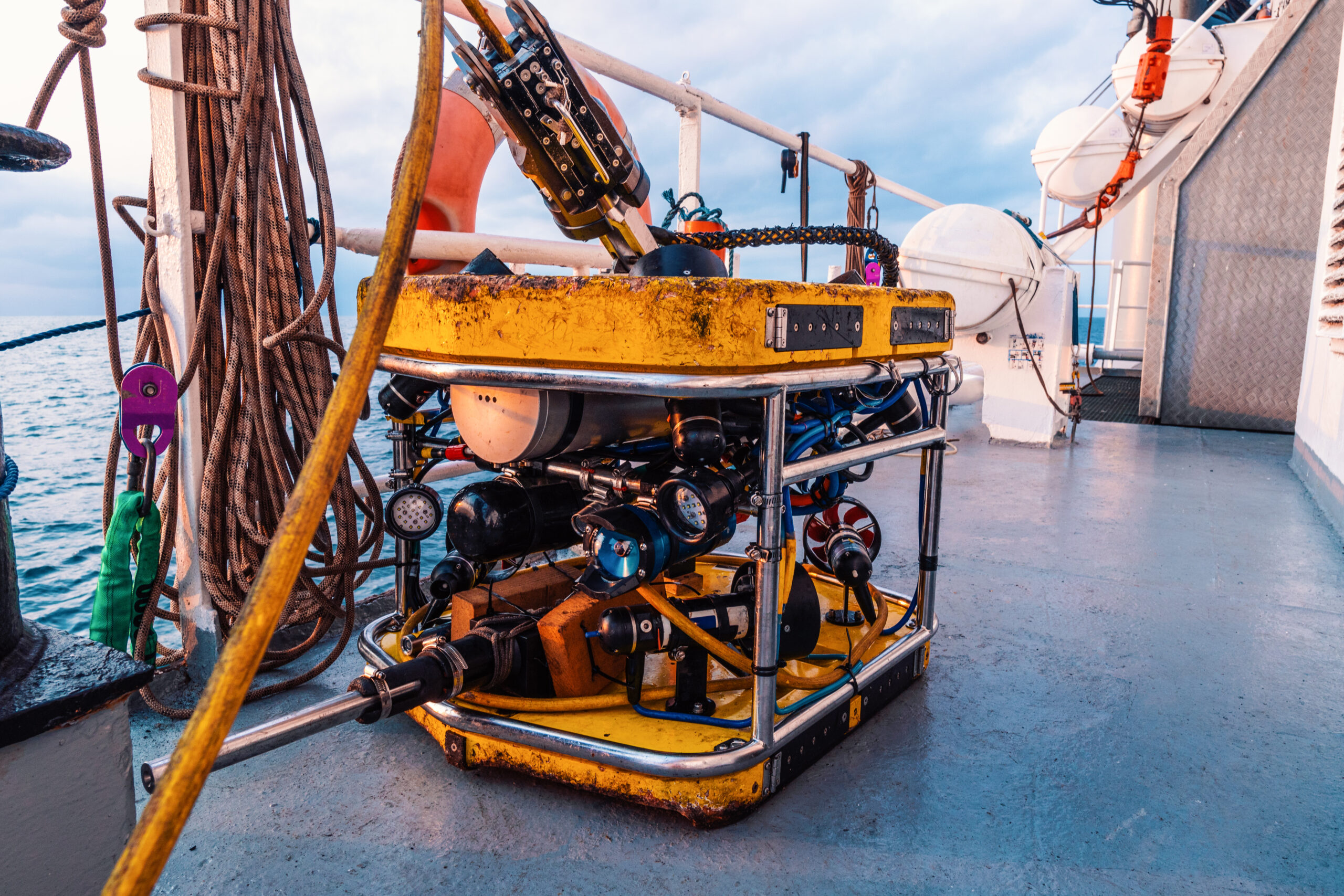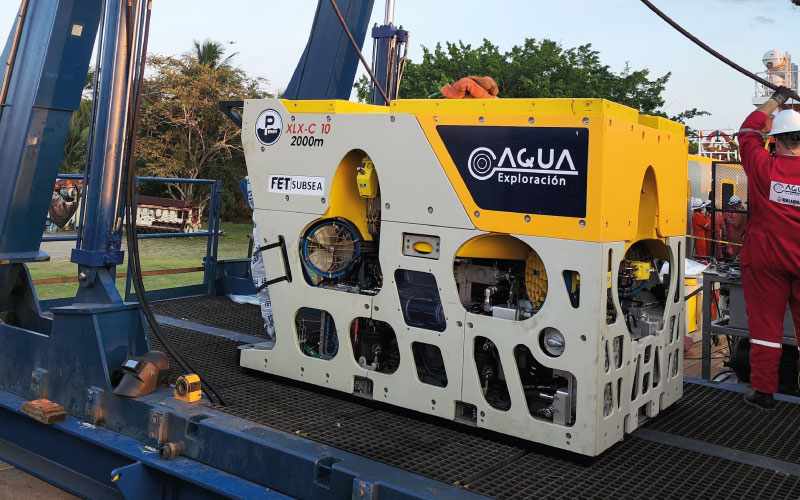ROVs (Remotely Operated Vehicles) are equipped with video cameras, sonar and other measuring instruments that allow detailed information of the underwater environment to be obtained without the need for human immersion, which is useful in areas of difficult access or dangerous conditions.

Advantages of using ROVs in Underwater Inspection
Safety:
By eliminating the need for divers to dive in hazardous environments or at great depths, ROVs minimize human risks.
Access to extreme depths:
ROVs can operate at depths that would be inaccessible or dangerous for scuba divers.
Real-time monitoring:
Operators on the surface can view images and data in real time, allowing for immediate decisions tailored to the needs of the inspection.
Versatility:
ROVs can be equipped with a wide range of sensors and tools, adapting to various underwater tasks and environments.
ROV technology continues to evolve, enabling more complex and detailed inspections in deep and difficult subsea environments, optimizing both safety and operational efficiency.
Common ROV Underwater Inspection Applications
Offshore infrastructure inspection:
ROVs are widely used to inspect and maintain oil and gas platforms, offshore wind farms and other offshore structures. They can check platform foundations, detect corrosion, cracks or impact damage.
Monitoring of submarine cables and pipelines:
ROVs can locate and monitor electrical cables and subsea pipelines, inspecting their condition and looking for possible damage or leaks. They can also assist in repairs or maintenance tasks.
Shipwreck exploration and underwater archaeology:
In the exploration of shipwrecks or underwater archaeological sites, ROVs allow a detailed survey without disturbing the environment. High-quality images can be obtained and objects manipulated without direct human intervention.
Underwater search and rescue:
ROVs are used in the search for people, vehicles or sunken vessels, providing real-time images and accessing depths where divers cannot easily reach or it would be dangerous.
Environmental studies:
ROVs are used to monitor marine life, map underwater habitats and measure water quality. They can be used in environmental impact studies to assess the effects of human activity on underwater ecosystems.
Inspection of bridges and docks:
To assess the condition of submerged foundations of bridges, docks and other harbor structures. ROVs can detect erosion, scour and other problems that compromise the stability of structures.

